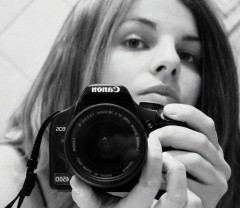
Back in the time of film, there was no digital to immediately see the results of the photograph. Yet the professionals were really good at bringing out all the tonal range in the scene, perfectly. How did they make it possible? The answer is a little known technique — The Zone System. Invented by Ansel Adams, the zone system was “the technique” for getting the proper exposure, good contrast and the smoothest yet widest tonal range in a photograph. The zone system applies equally to digital, only that few remember it or care. Here’s the little known and used secret.
The luminance range of naturally available light is vast. And out of these brightness levels, the human eye can perceive a dynamic range of 24 stops or 224 or 16777216 levels of brightness. But the poor camera can only cover about 10 stops (film). The digital cameras have an even narrower dynamic range usually between 6-8 stops. So eventually the problem is in a scene with a dynamic range greater than 10 stops, how do you make sure that no parts of the dynamic range of the scene are left out by the camera (i.e. the highlights and the shadows are not lost)?
The solution to the problem is the “Zone System”. The photographers use the zone system for capturing the highlights and shadow details as per their visualization. Having said that, let’s throw some light on what the zone system is and how does the photographer apply the zone system for creating great photographs.
The Zone System And The Zones
The zone system is the photographic technique of metering the dynamic range of the scene and bring it into control so that is captured by the camera in entirety. The zone system was formulated by Ansel Adams, rightly known as the father of photography. As an inference from his journey as a photographer, Ansel Adams devised the zone system to guide the upcoming photographers for controlling the levels of light to get pre-visualized exposure for the scene or the subject.
The zone system is the system of understanding the varying levels of light, ranging from white as the brightest to black as the darkest value. The zone system divides the levels of lights in eleven zones, as shown in the following figure:
The zones are presented in the range of 0 to X, where 0 represents pure black and X represents pure white and V is the indicator for mid-tones. The brightness levels of each zone increments by 1 f-stop towards the right and vice-versa. The thorough understanding of the zone system comes in handy for controlling the dynamic range of light and mapping it with the dynamic range of camera to photograph the amount of light and exposure you want in the final result.
How To Apply the Zone System
Understanding the zone system opens up the way for consciously portraying the desired highlights and shadows in the photograph. If you can measure the highlights and the shadows in a scene, using the zone system you can carefully estimate whether the dynamic range of the scene is within the zone system (i.e. the dynamic range of the camera). If the dynamic range in the scene extends beyond that of the camera, you’ll know that you have to use some techniques to bring down the dynamic range under control. And that’s the reason why photography studios have so many light sources and reflectors instead of just a single bulb. So essentially you have to use an external light meter to meter the shadows and highlights. And if the difference is anywhere more than 8-9 stops, you know that the lighting needs adjustment to bring the dynamic range of the scene into control. There are two approaches to controlling the dynamic range:
- To Tone Down The Highlights By Using A GND Filter: This approach comes in handy for photographing outdoors. Especially when photographing a landscape scene, you have to control the brightness of the sky, sunlight, clouds, etc and expose the scene well for the natural scenery. The GND filter helps in toning down the brightness of the sky and bringing it within the dynamic range of light to optimally portray the highlights and shadows in the color photography and tonal gradation in black and white photography.
- To Lighten Up The Shadows Using Reflectors Or Extra Lights: This approach comes in handy for balancing the exposure for the subject, especially in case of indoor shooting. Measure the exposure of various dimensions of the subject and use the reflectors (or extra light source) for controlling the shadows of the subject.
The zone system thus helps the photographer in controlling the dynamic range of light. This in turn helps in getting well-exposed images resulting in an even histogram and better contrast in the final results. The zone system is crucial for black and white since they do not have the dimension of color to differentiate one tone from another.
So, if you have an external light meter, try to measure the light in a scene, check the dynamic range, adjust as required and share your results.



Where are the myths mentioned in the title?
Readers may be interested that Ansel Adams and Fred R. Archer are co-inventors of the zone system.
You mention cameras having only 8 stops of dynamic range. You may want to update that cameras have in excess of 12 and often 14 stops of dynamic range.